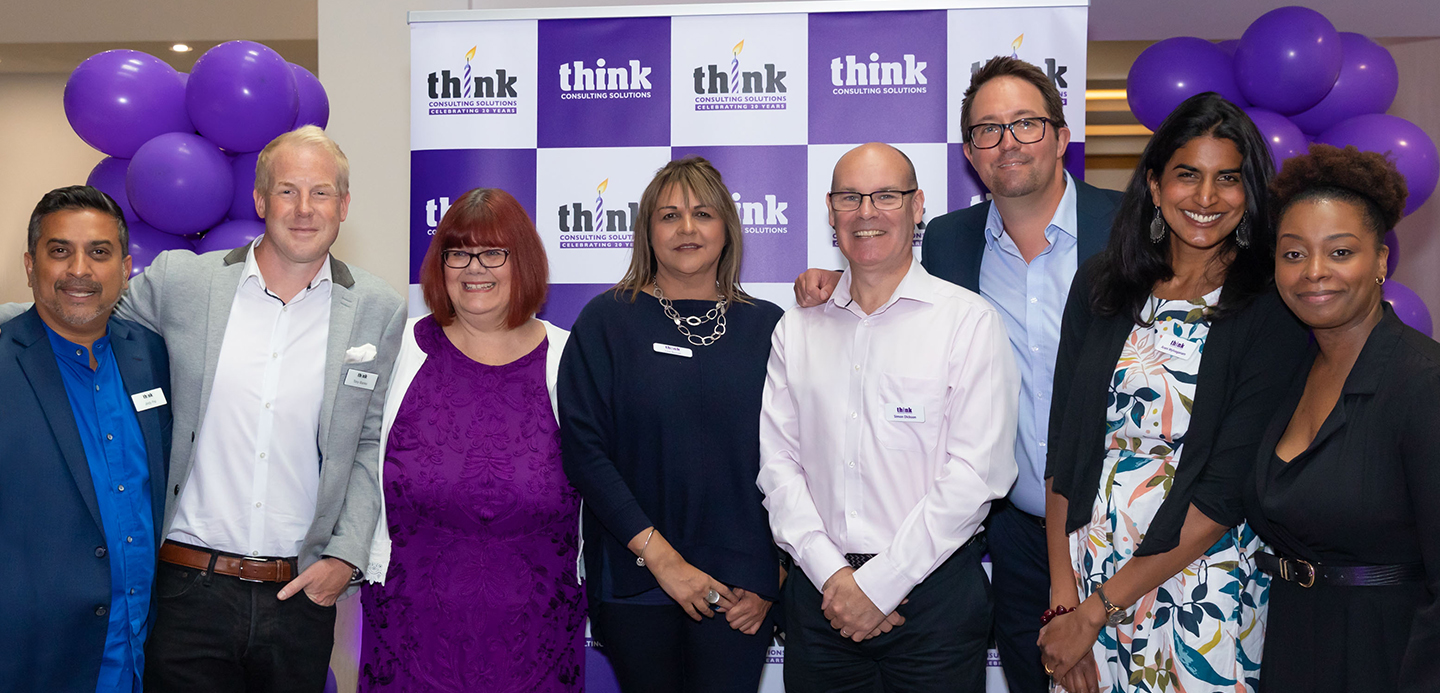
This time last year, the THINK team came together to make predictions for fundraising and charity sector trends they expected to see in 2022. We’ve reflected on these thoughts 12 months later to see how things have progressed.
(If you’re looking for our 2023 predictions blog post, you can find this here.)
[swmsc_image src=”https://thinkcs.org/wp-content/uploads/2019/12/Mich-300×300.jpg” align=”right” link=”#” lightbox=”true” lightbox_type=”image” border_radius=”10px” alt=”” title=””]
This time last year THINK’s Managing Director Michelle Chambers stressed that legacy fundraising should be charities’ top investment priority in 2022 – she said:
Consistent and sustained investment in a legacy marketing programme and pledger stewardship activity really should be a business-as-usual staple in every charity’s fundraising portfolio. But as it’s not, 2022 really is the year to get your legacy house in order!
Current predictions are that legacy income will reach £5 billion for the sector over the next 10 years; and with only 16% of estates with a will at probate containing a charitable gift, the headroom for growth is significant. It’s never too late to start and likely you have legacy pledgers already among your supporter base. Legacy fundraising works best when it is a whole organisation effort; so – if you are asked to prioritise investment for 2022 – this should be your number one.
Where are we a year later?
We’ve seen great legacy income results reported by many charities this year and legacy marketing remains a priority for many of THINK’s clients and contacts.
Michelle also reflected on the need to invest in data to provide greater insight into supporter motivations:
2022 will bring a continued acceleration of the need to understand how different demographics want to engage with and support your cause. For the first time, we are really seeing a move to a wider demographic spread amongst supporter bases, with all age groups giving voice, money and time, and a particular set of trends for giving amongst Millennials and Gen Z. Understanding what these different audiences want – using research rather than supposition – is key, and 2022 will see more and more charities expanding their knowledge base in this way. There is much freely available research and insight for broad demographic trends, which should be supplemented with bespoke intelligence gathering. This needs to be underpinned by robust systems for storing, retrieving and analysing data to drive insight and inform business decisions. Another key area for investment and focus in 2022.
Where are we a year later?
This change has happened – however many charities are still struggling to gather insight and respond to it. This is a growing imperative as giving by the under 40s continues to be strong.
[swmsc_image src=”https://thinkcs.org/wp-content/uploads/2020/01/People-Simon-300×300.jpg” align=”left” link=”#” lightbox=”true” lightbox_type=”image” border_radius=”10px” alt=”” title=””]
In 2021 THINK’s Director of Strategic Consultancy Simon Dickson said charities would need to address the specific motivations of female and younger philanthropists:
While COVID-19 resulted in greater giving, evidence suggests the uplift came from existing donors giving more. Over time, there has been a decline is donors overall. For 2022 and beyond, charities will need to work out how they inspire new people to support their cause and even to work collaboratively to show the value of the sector’s work. In terms of philanthropy, there has been a growth in female donors and younger philanthropists but what and how they support is different. Charities will need to address their specific motivations and provide ways for them to give – or more accurately to support – in a way that suits them.
Where are we a year later?
We have seen a very obvious manifestation of the importance of particular issues for women with the repeal of Roe versus Wade in the US. This not only appears to have had an impact on US mid-term elections but has led to increased funding for organisations spearheading gender equity and minority rights. MacKenzie Scott has just announced another $2bn tranche of donations to charities focusing on women and girls.
Simon also stressed the importance of partnership and collaboration:
Charities have historically talked about being unique and often suggest they are the only ones with the solution. With big issues such as climate change and global inequality, no single charity can solve the problem and there is growing recognition that only through collaboration can problems be solved. There are already interesting examples of multiple partners – charity, donors, and commercial partners – working together but these are likely to become more commonplace. This will rely on charities being willing and able to work together and be less about self-interest.
Where are we a year later?
It is hard to say that there have been more or better charity collaborations in 2022 than previous years but several have continued through 2022 and appear to be going from strength to strength (e.g. the CRUK, BHF and Diabetes UK collaboration with Tesco). Perhaps the ultimate collaboration is merger and they are on the rise, according to a report published by the Good Merger Index in March 2022.
[swmsc_image src=”https://thinkcs.org/wp-content/uploads/2020/01/People-Lisa-300×300.jpg” align=”right” link=”#” lightbox=”true” lightbox_type=”image” border_radius=”10px” alt=”” title=””]
In 2021 THINK Associate Partner Consultant Lisa Russel reflected on workplace diversity:
Workplace diversity was top of mind for many charities in 2021. With more and more organisations embarking on EDI strategies, it is essential in 2022 to understand what this truly means for us. Our strategies need to be more than a numbers game and need to contain more than visual indicators; we must identify clear goals, outcomes, competencies, and measures. Cultural intelligence is paramount in ensuring that we are creating environments with which people from different backgrounds will identify – enough to want to join our organisations – and in ensuring that we acknowledge the influence of different cultures on value and behaviours. Our sector must recognise our progress thus far, without seeing it as ‘job done’. Lifetimes of systemic bias will not be undone overnight, but small and continuous changes will make a difference. We need to foster an ongoing commitment to inclusion until workplace diversity is normalised.
Where are we a year later?
Charities have an identified commitment to EDI strategies but progress is perhaps slow, in part because the issues behind why organisations are not very diverse are quite complex.
[swmsc_image src=”https://thinkcs.org/wp-content/uploads/2022/07/Tony-square-300×300-1-300×300.jpg” align=”left” link=”#” lightbox=”true” lightbox_type=”image” border_radius=”10px” alt=”” title=””]
In 2021 THINK Consultant Tony Banks emphasised the need for events programmes balanced between in-person and virtual experiences:
In person events are going to return in 2022, but virtual events have proven they are here to stay too. Many see hybrid as the need to broadcast their physical events concurrently, so that guests have the option to join in person or virtually. While this approach will certainly have its place for some, it’s the charities who create a balanced events programme with a variety of in-person and virtual offerings all year round who will deliver an inclusive and accessible hybrid events strategy. Agility will be needed during the winter seasons as restrictions may tighten, so having the ability to scale up virtual when needed will remain key.
Where are we a year later?
As we have edged out of the pandemic, most charities have found balance in their annual event portfolios with a mixture of in-person and virtual events activity. Facebook challenge events have continued to perform well for many and are now an established part of numerous charity event programmes. The virtual and in-person mix has ensured that charity event programmes are more inclusive and accessible, allowing supporters who perhaps previously may have been excluded from particular in-person activity to participate in an event more on their terms. As the year draws to a close, we are certainly seeing more unique virtual events being developed in an attempt to stand out in a crowded marketplace. Sit up, press up, and squat challenges are also proving more prominent during the winter months with walking, cycling and swimming challenges more frequent over the summer period.
Tony was also interested to see how the sector would take advantage of augmented (AR) and virtual reality (VR) tech:
2021 saw Mark Zuckerberg introduce his Metaverse to the world. Will we see augmented and virtual reality become a possibility for hosting events in 2022? Facebook challenges have been huge income generators this year (2021), and the platform continues to improve and evolve. How long will it be before online event communities move beyond 2D and become more immersive through advancements in social technology?
Where are we a year later?
Augmented and virtual reality is not yet commonplace for charities. That said, there are some who are using it to increase visibility, drive effective storytelling and immerse supporters in issues and scenarios that connect them closer to the cause. UNICEF uses VR at events, conferences, and meetings to raise awareness of social issues like poverty and crime, and the solutions the charity is putting in place. Then there is CoppaFeel, who have used an AR app on billboards, which provides real time current statistics, emphasising the time sensitivity of their campaign. The International Committee of the Red Cross have developed ‘Enter The Room’ – an app that transports you into the harsh reality of war and conflict with a powerful experience that leverages a combination of augmented reality, 3D audio, haptics, and empathy.
[swmsc_image src=”https://thinkcs.org/wp-content/uploads/2020/01/People-Arani-e1626342047408.jpg” align=”right” link=”#” lightbox=”true” lightbox_type=”image” border_radius=”10px” alt=”” title=””]
In 2021 THINK’s Research Manager, Arani Mylvaganam predicted a focus on philanthropic giving and testing supporter journeys:
Philanthropic giving to the forefront
With events and community fundraising likely to remain in a state of flux for at least the first half of 2022, philanthropic giving will be a focus for many charities. I expect to see the uptick in prospect research continuing as charities plan their pipelines and develop corporate, foundation and high-net-worth-individuals engagement plans.
Where are we a year later?
We have had one of our busiest years of providing prospect research to clients, ever! So I think this prediction is very much playing out. It is great to see all the excellent work that CIOF’s Researchers in Fundraising Group are doing to support and guide prospect researchers in this ever complex and competitive arena.
Stewardship
Stewardship continues to be critical, and charities will become ever more aware of the importance of checking and testing their supporter journeys, either via internal mystery shopping projects or through external validation.
Where are we a year later?
Stewardship is growing ever more tailored and sophisticated, which is great to see. Our work on the THINK Stewardship Tracker indicates that many charities are doing a superb job in engaging and connecting with supporters via well pitched, engaging content. However brilliant basics – timely and genuine thanking – will always be the cornerstone of a strong stewardship journey, and that will never change.
[swmsc_image src=”https://thinkcs.org/wp-content/uploads/2019/12/4-JP-300×300.jpg” align=”left” link=”#” lightbox=”true” lightbox_type=”image” border_radius=”10px” alt=”” title=””]
In 2021 THINK Senior Consultant Jindy Pal hoped for a positive change in the wellbeing of not-for-profit staff:
In 2021 we saw colleagues being worked to the brink, with no let-up or time to reflect, analyse and make insightful strategic decisions about their programmes. Continuing to work at this pace and pressure worries me about the overall wellbeing of colleagues across the sector. My hope for 2022 is that we can find a way to ease the stresses and really support one another so that, as a sector, we can continue to bring about positive changes.
Where are we a year later?
Resourcing and capacity were two of the main factors that contributed to individuals being overwhelmed and feeling they were on a constant, fast moving treadmill. At its core, the issue has been driven by recruitment and retention challenges. From late summer, we started to see a shift in getting more teams up to resource and full capacity. Whilst challenges remain, there have been significant positive changes.
[swmsc_image src=”https://thinkcs.org/wp-content/uploads/2020/01/People-Michelle-S-300×300.jpg” align=”right” link=”#” lightbox=”true” lightbox_type=”image” border_radius=”10px” alt=”” title=””]
In 2021 THINK Associate Senior Consultant Michelle Sorrell predicted that corporate partnerships were likely to focus on driving change:
Corporate partnerships in 2022 will continue to be an exciting space for those who have existing partnerships, with lots of the innovation and creativity we’ve seen across many partnerships over the last two years continuing. Acquisition of new partnerships will remain tough as companies start to emerge from the pandemic and seek to better understand their CSR and social purpose plans going forward, therefore stalling their commitment to partnerships. The pressure on companies to step up and help drive change will continue, so being able to measure the impact of partnerships will be critical. Creating partnerships and collaborations around issues and driving change together will be a key theme for companies as they seek a range of charity and other partners to work with them.
Where are we a year later?
Acquisition has remained tough, with many companies staying with their existing partners and innovating to develop partnerships during 2022. There has been a significant shift in momentum from a focus on CSR to a broader lens of social purpose, although for many it feels like they are trying to play catch-up. Embedding this in organisations is taking time and is often challenging. Creativity and collaboration were widely celebrated across the sector but there is so much more that needs to happen to drive up consideration and measurement of impact.
You can read the full article with all 20 of last year’s predictions and thoughts here: 20 thoughts for 2022. In the New Year we’ll be bringing you the THINK team’s predictions for trends in fundraising for 2023 – watch this space!
And in the meantime, we wish you a joyful and peaceful Christmas and New Year.
The THINK team
December 2022
_________________________________________________________________________________________
If you would like to discuss our THINKing further, please contact our central office on info@thinkcs.org.
You can also find us on LinkedIn at THINK Consulting Solutions and on twitter @ThinkCS, where we share useful industry insights.
Related posts
Did our 2025 predictions come true? Reflections from the THINK team
We revisit our January 2025 fundraising predictions and explore what actually happened: what…


What the 2025 community fundraising mystery shop reveals about the supporter experience
This year’s THINK mystery shop shows that when charities invest in meaningful engagement,…


How do charity services shape local fundraising?
In his first month as THINK’s new Director of Data, Steven White reflects…

Sign up to our email newsletter
We call it ‘Something to THINK About’ – a regular dose of sector insight, ideas and updates, straight to your inbox.
